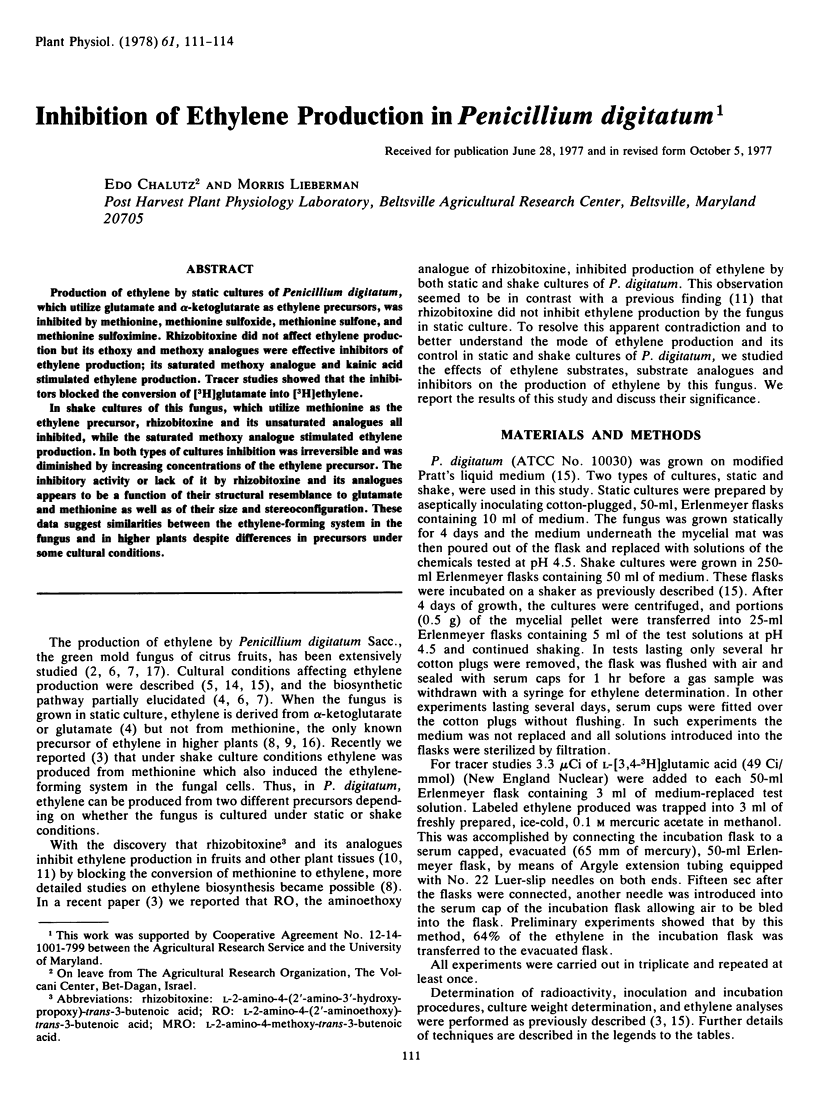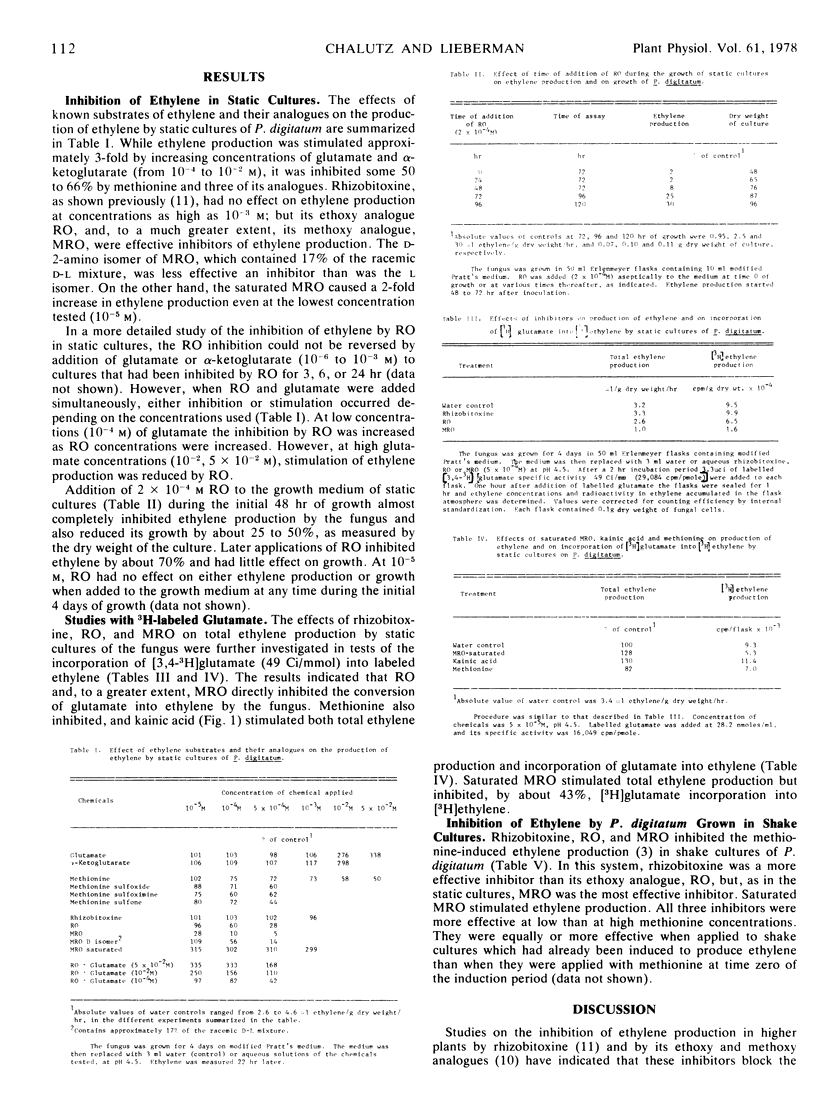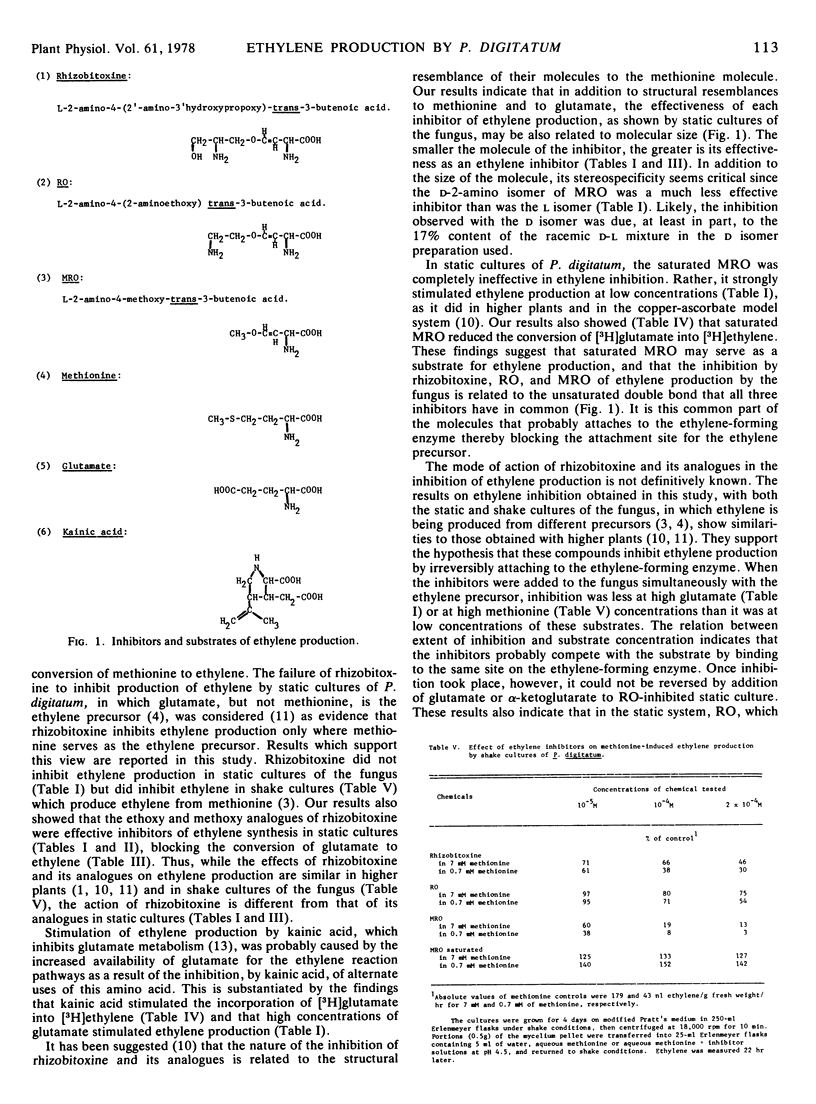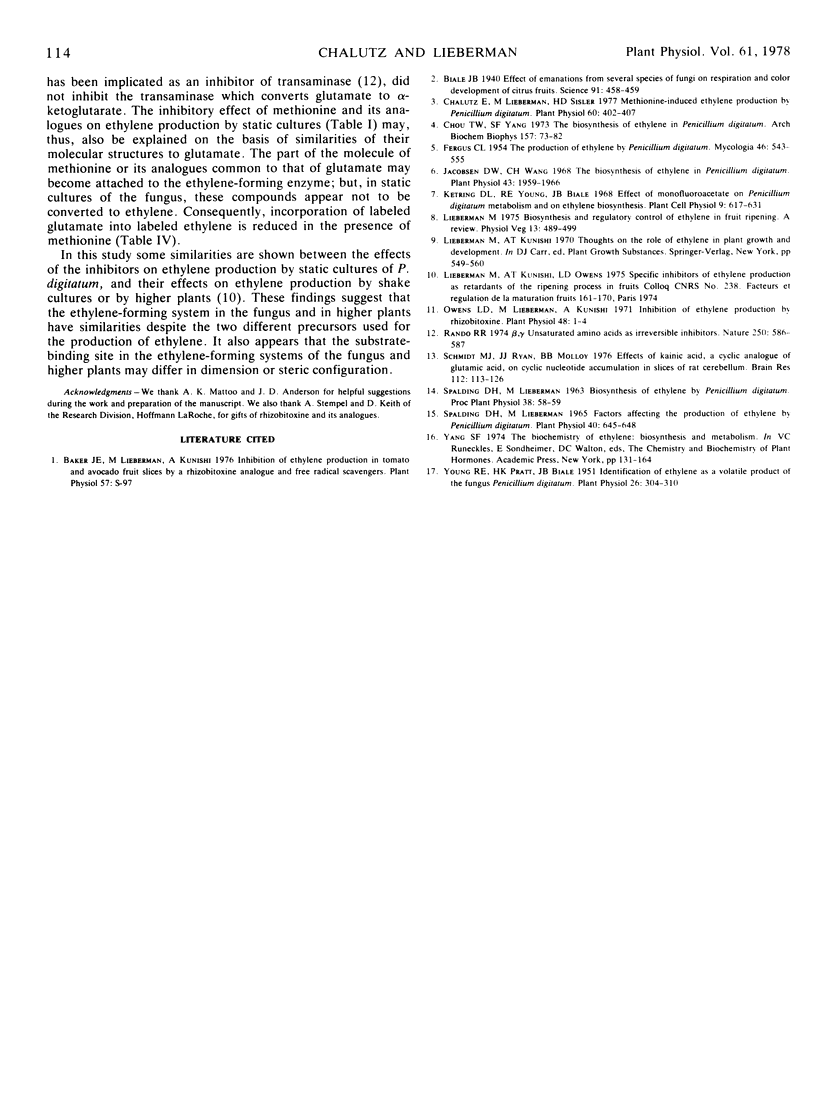Abstract
Production of ethylene by static cultures of Penicillium digitatum, which utilize glutamate and α-ketoglutarate as ethylene precursors, was inhibited by methionine, methionine sulfoxide, methionine sulfone, and methionine sulfoximine. Rhizobitoxine did not affect ethylene production but its ethoxy and methoxy analogues were effective inhibitors of ethylene production; its saturated methoxy analogue and kainic acid stimulated ethylene production. Tracer studies showed that the inhibitors blocked the conversion of [3H]glutamate into [3H]ethylene.
In shake cultures of this fungus, which utilize methionine as the ethylene precursor, rhizobitoxine and its unsaturated analogues all inhibited, while the saturated methoxy analogue stimulated ethylene production. In both types of cultures inhibition was irreversible and was diminished by increasing concentrations of the ethylene precursor. The inhibitory activity or lack of it by rhizobitoxine and its analogues appears to be a function of their structural resemblance to glutamate and methionine as well as of their size and stereoconfiguration. These data suggest similarities between the ethylene-forming system in the fungus and in higher plants despite differences in precursors under some cultural conditions.
Full text
PDF



Selected References
These references are in PubMed. This may not be the complete list of references from this article.
- Biale J. B. EFFECT OF EMANATIONS FROM SEVERAL SPECIES OF FUNGI ON RESPIRATION AND COLOR DEVELOPMENT OF CITRUS FRUITS. Science. 1940 May 10;91(2367):458–459. doi: 10.1126/science.91.2367.458-a. [DOI] [PubMed] [Google Scholar]
- Chalutz E., Lieberman M. Methionine-induced Ethylene Production by Penicillium digitatum. Plant Physiol. 1977 Sep;60(3):402–406. doi: 10.1104/pp.60.3.402. [DOI] [PMC free article] [PubMed] [Google Scholar]
- Chou T. W., Yang S. F. The biogenesis of ethylene in Penicillium digitatum. Arch Biochem Biophys. 1973 Jul;157(1):73–82. doi: 10.1016/0003-9861(73)90391-3. [DOI] [PubMed] [Google Scholar]
- Jackson A. O., Larkins B. A. Influence of Ionic Strength, pH, and Chelation of Divalent Metals on Isolation of Polyribosomes from Tobacco Leaves. Plant Physiol. 1976 Jan;57(1):5–10. doi: 10.1104/pp.57.1.5. [DOI] [PMC free article] [PubMed] [Google Scholar]
- Jacobsen D. W., Wang C. H. The biogenesis of ethylene in penicillium digitatum. Plant Physiol. 1968 Dec;43(12):1959–1966. doi: 10.1104/pp.43.12.1959. [DOI] [PMC free article] [PubMed] [Google Scholar]
- Owens L. D., Lieberman M., Kunishi A. Inhibition of ethylene production by rhizobitoxine. Plant Physiol. 1971 Jul;48(1):1–4. doi: 10.1104/pp.48.1.1. [DOI] [PMC free article] [PubMed] [Google Scholar]
- Rando R. R. Beta, gamma unsaturated amino acids as irreversible enzyme inhibitors. Nature. 1974 Aug 16;250(467):586–587. doi: 10.1038/250586a0. [DOI] [PubMed] [Google Scholar]
- Schmidt M. J., Ryan J. J., Molloy B. B. Effects of kainic acid, a cyclic analogue of glutamic acid, on cyclic nucleotide accumulation in slices of rat cerebellum. Brain Res. 1976 Aug 6;112(1):113–126. doi: 10.1016/0006-8993(76)90338-3. [DOI] [PubMed] [Google Scholar]
- Spalding D. H., Lieberman M. Factors affecting the production of ethylene by Penicillium digitatum. Plant Physiol. 1965 Jul;40(4):645–648. doi: 10.1104/pp.40.4.645. [DOI] [PMC free article] [PubMed] [Google Scholar]


